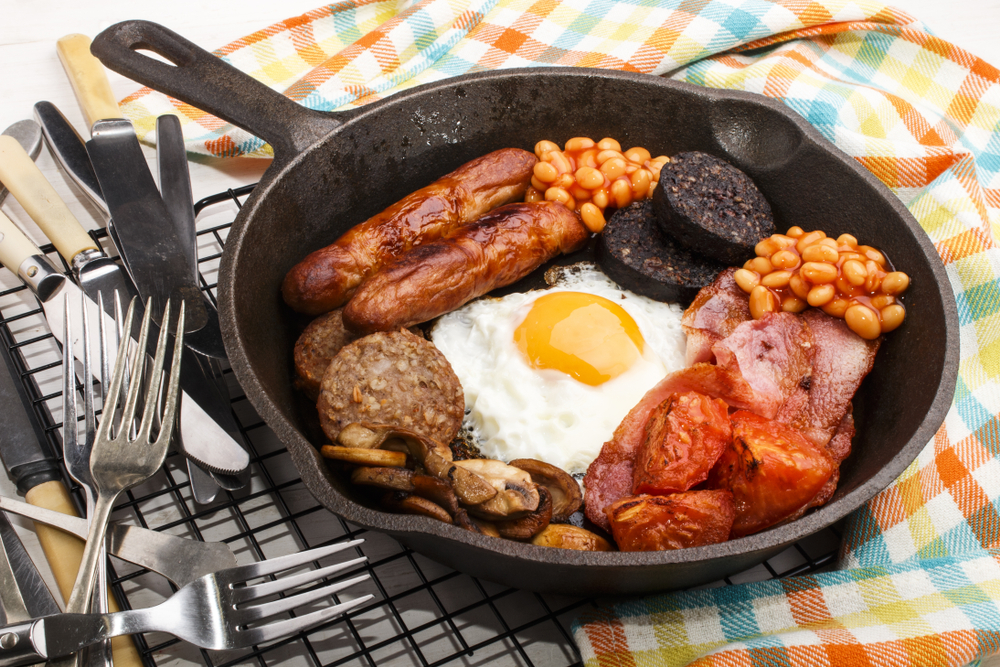
Drinking a beer in Temple Bar Dublin

In the heart of Dublin, the Temple Bar district embodies the very essence of Irish pub culture. With its colourful facades, traditional music and pints of Guinness, this legendary district attracts millions of visitors every year. A true Dublin institution for centuries, Temple Bar offers an authentic experience where beer, conviviality and history mingle in an electric atmosphere. Whether you’re a lover of craft beer, a live music enthusiast or simply looking for a festive atmosphere, this iconic neighbourhood promises a total immersion in the Irish soul. Get ready to discover the best pubs, not-to-be-missed local beers and all the secrets to making the most of your Temple Bar experience.

Also read the Dublin guide:
- Dublin in 1 day: 20 things to do and see on foot
- Top 10 things to do in Dublin
- Top 5 hotels to stay in Dublin
- Top 10 culinary specialities in Dublin
- Gastronomy: Top 10 of Ireland’s culinary specialities
Temple Bar: the history and identity of a legendary district
Temple Bar takes its name from William Temple, Rector of Trinity College, who owned land in the area in the 17th century. But the history of the area goes back much further: Vikings settled here as early as 795 AD, making Temple Bar one of the oldest areas of Visit Dublin. Over the centuries, the area between Dame Street and the River Liffey has seen a variety of fortunes, from a popular district in the 18th century to a declining area in the 1980s.
It was in 1991, when Dublin became European Capital of Culture, that Temple Bar experienced a spectacular renaissance. The district was transformed into a cultural and festive epicentre, attracting artists, musicians and visitors from all over the world. Today, Temple Bar covers some 11 hectares and is home to more than twenty traditional pubs, making this cobbled area the beating heart of Dublin’s nightlife. Its narrow streets lined with colourful Victorian facades create a unique atmosphere that blends historic authenticity with contemporary energy.
The best pubs for a beer in Temple Bar

1. The Temple Bar Pub
You can’t visit Temple Bar without stopping off at the eponymous pub, a Dublin institution since 1840. With its bright red facade adorned with flowers and vintage signs, The Temple Bar Pub (47-48 Temple Bar, Dublin 2, D02 N725, rated 4.3/5 on Google with over 25,000 reviews) is probably the most photographed pub in Ireland. Inside, the atmosphere is electric with live traditional Irish music every day from morning till night. The pub also houses Ireland’s largest collection of whiskies, with over 450 references.
While the experience is worth the diversions for the unique atmosphere and the quality of the music, you should be aware that the prices are among the highest in Dublin: expect to pay around €10 to €12 for a pint of Guinness, compared with €6 to €7 in other establishments in the city. Despite these tourist prices, Temple Bar is still a must if you want to immerse yourself in the festive atmosphere for which it is famous.
2. The Porterhouse
Located on Parliament Street at the entrance to Temple Bar, The Porterhouse (16-18 Parliament Street, Temple Bar, Dublin 2, rated 4.4/5 on Google out of 8,500 reviews) occupies a special place in Dublin’s landscape. Opened in 1996, it was Ireland’s very first craft brewery, marking the beginning of the craft beer revolution in the country. Spread over three floors, the brewery produces a dozen home-brewed beers in a variety of flavours, from creamy black stout to fruity ales.
The Porterhouse also offers live music every day in a more relaxed atmosphere than some of its neighbouring pubs. Prices here are slightly more affordable than at the Temple Bar Pub, with pints around €7 to €8. If you’re looking for a new brew, try their Plain Porter or Oyster Stout. The pub only serves its own beers, guaranteeing optimum freshness and allowing you to sample flavours not available elsewhere.
3. The Auld Dubliner
Recognisable by its bright yellow façade, The Auld Dubliner (24-25 Temple Bar, Dublin 2, rated 4.2/5 on Google for 6,200 reviews) perfectly embodies the spirit of the traditional Irish pub. This authentic pub attracts tourists and Dubliners alike thanks to its warm atmosphere and quality music programme. Every evening, traditional Irish music groups perform in a friendly atmosphere where it is not uncommon for the audience to sing along.
The restaurant also serves modern Irish cuisine with a twist, perfect to accompany your pint of Guinness. Prices are similar to those in the local area, but the authenticity of the decor, with its dark wood panelling, vintage objects and family atmosphere, makes it a sure bet for a successful evening in Temple Bar.
4. Oliver St. John Gogarty Pub
Named after the famous Irish poet Oliver St. John Gogarty, this pub on Fleet Street offers a complete experience. Oliver St. John Gogarty Pub (58-59 Fleet Street, Temple Bar, Dublin 2, rated 4.3/5 on Google out of 7,800 reviews) offers traditional Irish music non-stop, often from the afternoon, making it an excellent choice for an early morning discovery of the Temple Bar atmosphere.
The pub also has a seafood restaurant on the first floor and even guest rooms for those who want to stay right in the heart of the action. The atmosphere is more relaxed during the day, allowing you to enjoy a quiet beer while listening to live music, before the evening crowds take over. To make the most of the Navaway audio tour, which takes you through the treasures of Dublin, don’t hesitate to take a break in this iconic pub right at the heart of the route.
5. The Quays Bar
Less well known than its neighbours but just as authentic, The Quays Bar (11-12 Temple Bar, Dublin 2, rated 4.1/5 on Google for 3,500 reviews) is worth a visit for its local atmosphere and slightly more reasonable prices. This traditional pub has a high-quality music programme every day, often featuring seasoned musicians who play for fun rather than for tourists.
The warm interior with its wooden alcoves and antique bar creates an intimate atmosphere perfect for enjoying a pint of Smithwick’s or a Kilkenny. Dubliners love this place for its unspoilt authenticity and genuine welcome. If you’re looking to escape the tourist crowds while staying in the area, The Quays Bar is a great alternative.
Which beer to order at Temple Bar?

Guinness, an Irish institution
Ordering a pint of Guinness in Temple Bar is almost an initiation ritual. This creamy black stout, brewed in Dublin since 1759, is the very symbol of Ireland. In Temple Bar, you’ll discover that Guinness tastes different from what’s served anywhere else in the world: fresher, creamier, with a perfectly dense head. The Irish will tell you that Guinness is better in Dublin because it travels less, and they’re not wrong.
The ritual of the ‘perfect pint’ takes on its full meaning here: the barman fills the glass three-quarters full, leaves it to stand for the time it takes for the foam to stabilise (around 119 seconds according to tradition), then completes the glass until the famous perfect white clover appears in the foam. The wait is part of the experience and well worth savouring. In the pubs of Temple Bar, you’ll find that the locals often order their Guinness “with an Irish whiskey chase”, creating the perfect pairing of Irish flavours.
Porterhouse craft beers
For fans of new brewing discoveries, the Porterhouse’s creations offer an exciting alternative to Guinness. Their Plain Porter, with its taste of dark chocolate and coffee, is reminiscent of the traditional Dublin beers of the 18th century. The Oyster Stout, brewed with real oysters, offers surprising iodine notes that will delight adventurous palates. For something lighter, their Citra Pale Ale with citrus notes is an excellent refreshing option.
The Porterhouse also offers seasonal beers that change regularly, so that regulars can always discover new flavours. Don’t hesitate to ask the bartenders for advice: they’re real enthusiasts and will be able to guide you according to your preferences. For those who are undecided, a tasting tray of four different beers allows you to make your choice with full knowledge of the facts.
Other Irish beers to discover
As well as Guinness, Temple Bar offers the chance to discover other Irish beers with character. Smithwick’s, an amber red ale from Kilkenny, has a malty, slightly caramel flavour that is sweeter than Guinness. Murphy’s Stout, a direct competitor to Guinness, offers a slightly sweeter and less bitter taste, appreciated by those who find Guinness too robust.
For a more modern experience, look out for Five Lamps Lager, a light and refreshing lager produced in Dublin, or Islands Edge Stout, a contemporary stout with hints of roasted coffee. Bars such as The Porterhouse and some Temple Bar establishments also offer international craft beers, but the essence of the Temple Bar experience lies in tasting authentic Irish beers.
The musical ambience of Temple Bar

Temple Bar attracts so many visitors for its traditional Irish music. From the afternoon until the early hours of the morning, the sounds of the fiddle, tin whistle, bodhrán (traditional drum) and guitar can be heard in almost every pub in the area. This free live music is an integral part of the experience, creating a unique festive atmosphere where the boundaries between performer and audience become blurred.
Traditional music sessions, known as ‘trad sessions’, often take place spontaneously: musicians get together and start playing, sometimes joined by other artists or even customers. This centuries-old tradition perpetuates the Irish musical heritage from generation to generation. In pubs such as The Temple Bar or Oliver St. John Gogarty, the concerts are scheduled and the musicians are paid, generally offering very high quality performances, sometimes with traditional Irish dancers.
The atmosphere reaches its peak in the evenings, especially at weekends, when the pubs become packed and the crowds sing along to Irish classics such as “Whiskey in the Jar” and “The Wild Rover”. This collective communion over music and beer creates unforgettable moments and perfectly illustrates the legendary Irish conviviality. To enjoy this authentic experience while discovering the other wonders of Dublin, let yourself be guided by theNavaway itinerary through the Irish capital.
Practical tips for enjoying Temple Bar
The best times to visit
The timing of your visit to Temple Bar greatly influences the experience. In the early afternoon, between 2pm and 5pm, the area offers a more relaxed atmosphere: the pubs are less crowded, you can easily find a seat and enjoy the live music in comfortable conditions. This is the ideal time for visitors who prefer a quiet atmosphere and really want to listen to the traditional music.
From 6pm onwards, the crowds gradually increase, especially on Thursday, Friday and Saturday. Between 8pm and midnight, Temple Bar becomes a veritable bundle of festive energy: the pubs literally spill out onto the cobbled streets, the music is in full swing and the atmosphere is electric. If you’re looking for that intense experience and aren’t afraid of crowds, this is the perfect time. Be warned, though: some pubs charge a weekend evening entrance fee, usually between €5 and €10.
To avoid the hordes of tourists, it’s best to visit during the week, especially on Mondays and Tuesdays, when the atmosphere is still festive but more authentic, with more Dubliners. In summer, Temple Bar is systematically packed every day, while in winter, the atmosphere is more intimate and warm, which is particularly appreciated during the festive season.
Budget and price
Temple Bar is reputed to be Dublin’s most expensive area for alcoholic beverages. A pint of Guinness generally costs between €7 and €12, depending on the establishment and the time of day. Cocktails range from €12 to €20, while an Irish whiskey is around €8 to €15, depending on the quality. These prices, well above the Dublin average (around €6 a pint elsewhere), are explained by the touristy location and the free live music.
There are several ways of getting the most out of your budget: visit Temple Bar in the early afternoon to enjoy the atmosphere without paying an entrance fee, limit yourself to one or two drinks in the most expensive pubs such as The Temple Bar, then move on to more affordable establishments on the outskirts of the district. Some pubs offer early evening happy hours with attractive discounts. Ask at the door to make sure you don’t miss out.
If you want to eat in, expect to pay between €15 and €25 for a traditional Irish dish. Fish and chips, the signature dish, usually costs around €12 to €18. Despite these high prices, the Temple Bar experience is still a must when visiting Dublin, and can be incorporated intelligently into your budget by planning your consumption.
How to get to Temple Bar
Temple Bar has an exceptional central location on the south bank of the River Liffey, within easy walking distance of most city centre accommodation. If you’re following the Navaway route to Dublin, you’ll naturally pass through the area, making this festive stop a perfect addition to your tour of the city.
There are several public transport options: bus routes 13, 27, 40, 49, 54A, 56A, 77A, 123 and 150 serve the area, stopping at Dame Street or Wellington Quay. The Luas tram (green line) stops at Trinity College, just a 5-minute walk from Temple Bar. If you are travelling from the airport, the Airlink Express 747 will drop you off in the immediate vicinity.
Parking in central Dublin is often a problem, and is not recommended due to heavy traffic and prohibitive prices. If you arrive by car, opt for a secure underground car park such as the Park Rite on Drury Street (around €4 an hour), then explore the area on foot. Temple Bar can be visited entirely on foot, and its traffic-free cobbled streets make it a pleasant place to stroll between pubs.
Beyond beer: what to see and do in Temple Bar
Although the pubs are Temple Bar’s main attraction, there are many other cultural attractions to discover between pints. Meeting House Square, the district’s central square, regularly hosts cultural events, open-air concerts and the famous Saturday morning organic market. This unique covered area is particularly lively during festivals such as the Dublin Fringe Festival and Culture Night.
For film buffs, the Irish Film Institute (IFI) on Eustace Street offers screenings of independent films, Irish and international documentaries and a specialist bookshop café. Founded in 1943, this national film centre also preserves a valuable film archive. Contemporary art lovers will appreciate the Temple Bar Gallery + Studios, founded in 1983, which houses over 30 artists in residence and offers free exhibitions of contemporary Irish and international art.
The Project Arts Centre, a multi-disciplinary institution since 1967, offers contemporary theatre, dance, visual arts and public debates on Essex Street East. For families, The Ark, a unique cultural centre dedicated to children aged 2 to 12, offers adapted plays, creative workshops and exhibitions. Finally, don’t miss the Temple Bar Food Market on Saturdays in Meeting House Square, where local producers offer farm produce, artisan breads, cheeses and Irish specialities in a friendly, gourmet atmosphere.
Download the audio-guided tour to discover Dublin on foot and on your own
Navaway offers you a complete audio tour to explore Dublin on your own. With 20 fun audio guides and interactive navigation, discover the treasures of Ireland’s capital, from Trinity College to Dublin Castle, including of course the must-see Temple Bar district. The app guides you step by step through Dublin’s most beautiful streets, squares and neighbourhoods, with historical commentary, captivating anecdotes and even a few mysteries to solve. Download the itinerary and let it guide you as you explore this fascinating city, where every street corner tells a story.
Alternatives to Temple Bar for a beer in Dublin
Although Temple Bar is unmissable, Dublin is home to over 700 traditional pubs, many of which offer an equally authentic experience at more affordable prices. The Brazen Head, on Lower Bridge Street a 10-minute walk from Temple Bar, is Ireland’s oldest pub, founded in 1198. Its medieval atmosphere, traditional music sessions and reasonable prices make it a great alternative.
In the Georgian Quarter, O’Donoghue’s on Merrion Row is legendary for playing host to the early days of The Dubliners. This authentic pub offers excellent traditional music sessions every day in a local atmosphere, far from the tourist hustle and bustle. The Stag’s Head on Dame Court, a beautifully preserved Victorian pub with stained glass windows and period furniture, serves fairly priced pints of Guinness in an authentic setting.
For lovers of craft beers, The Bernard Shaw in Portobello offers an impressive selection of Irish and international craft beers in a young and relaxed atmosphere. Mulligan’s on Poolbeg Street, James Joyce’s favourite pub, has been keeping up the tradition since 1782 with its Guinness, reputed to be one of Dublin’s best. These establishments are a great way to experience the real Dublin, while making substantial savings on Temple Bar prices.
Irish gastronomy at Temple Bar

Pairing your beer with a good traditional Irish dish is an integral part of the Temple Bar experience. Fish and chips, a British speciality adopted by Ireland, here comes in the form of freshly caught cod or haddock, served with thick chips and a homemade tartar sauce. Leo Burdock’s, a Dublin institution since 1913 located a stone’s throw from Temple Bar on Werburgh Street, offers arguably the best fish and chips in the city in an authentic takeaway atmosphere.
Irish stew, a lamb stew simmered with potatoes, carrots and onions, warms hearts in the pubs of Temple Bar, and is particularly popular on chilly days. The boxty, a typically Irish grated potato cake, comes in both savoury and sweet versions and is the perfect base for meat and vegetables. The Boxty House on Temple Bar offers an entire menu dedicated to this speciality, creatively revisited.
For a quick snack between pubs, Dublin coddle, a kind of sausage and bacon stew with potatoes and onions, is a comforting and economical dish. Seafood lovers will love the fresh oysters, often served with a pint of Guinness in the traditional Irish way, where the two flavours complement each other perfectly. Finally, for dessert, don’t miss the Irish coffee, a hot cocktail combining coffee, Irish whiskey, cane sugar and crème fraîche, a veritable institution created in Ireland in the 1940s.
Events and festivals in Temple Bar
Temple Bar vibrates to the rhythm of cultural events throughout the year, transforming the district into Dublin’s festive epicentre. St Patrick’s Day, celebrated on 17 March, is the pinnacle of Dublin’s entertainment, with spectacular parades, free concerts and a crazy atmosphere where Temple Bar becomes literally impassable due to the crowds. Book your accommodation several months in advance if you want to enjoy this unique experience.
The Dublin Fringe Festival in September transforms the area into a giant stage with over 500 performances of theatre, dance, music and visual arts over two weeks. Culture Night, one night a year, usually in September, opens museums, galleries and cultural institutions free of charge until midnight, with concerts and performances in the streets of Temple Bar. TradFest in January celebrates traditional Irish music with concerts in all the local pubs.
Summer brings open-air film screenings in Meeting House Square, where you can enjoy the cinema under the stars in a friendly atmosphere. The Temple Bar Christmas Market in December creates a magical atmosphere with its wooden chalets selling local crafts, mulled wine and Irish specialities. These events reinforce the cultural identity of the area and offer unique opportunities to experience Temple Bar through more than just its pubs.
In conclusion, drinking a beer in Temple Bar is much more than a simple drink: it’s a total immersion in the Irish soul, where traditional music, legendary conviviality and historical heritage combine in an atmosphere that is unique in the world. From creamy pints of Guinness to craft beers from the Porterhouse, from spontaneous live music sessions to colourful Victorian facades, Temple Bar embodies the very essence of Dublin. Despite its high tourist prices, the experience is a must for anyone visiting the Irish capital. To get the most out of your visit to Dublin and make Temple Bar part of a complete itinerary, don’t hesitate to follow theNavaway audio tour, which will reveal all the secrets of this fascinating city.
FAQ: everything you need to know about Temple Bar
How much does a pint of Guinness cost in Temple Bar?
A pint of Guinness in Temple Bar costs between €7 and €12, depending on the pub and the time of day. The Temple Bar Pub, the most famous, charges the highest prices (€10-12), while other pubs in the area offer prices of around €7-8. By comparison, elsewhere in Dublin, a pint generally costs between €5.50 and €7.
Is there live music every day at Temple Bar?
Yes, most of the pubs in Temple Bar offer live traditional Irish music on a daily basis, often from the afternoon into the evening. The Temple Bar Pub and Oliver St. John Gogarty in particular offer live music several times a day at no extra charge. Sessions are generally of better quality in the evenings and at weekends.
Is Temple Bar a tourist trap?
Temple Bar does attract a lot of tourists and charges high prices, but the experience remains authentic. The traditional music is good, the atmosphere unique, and the area retains its historic charm. To avoid the ‘tourist trap’ aspect, visit on weekdays, alternate with Dublin pubs outside the district, and favour less busy hours.
Can children visit Temple Bar?
Yes, Temple Bar is perfect for families to visit during the day. Children are generally allowed in the pubs until early evening (around 8pm). The area also offers family attractions such as The Ark (a children’s cultural centre), the Saturday morning market, and child-friendly restaurants. The evening party atmosphere is best suited to adults.
When is the best day to visit Temple Bar?
Saturdays offer the most electric atmosphere, with the morning market and maximum evening entertainment, but also the densest crowds. For a more authentic experience with more locals, choose Tuesday, Wednesday or Thursday evenings. Sunday afternoons offer a relaxed atmosphere ideal for families.
Do I need to book a table in the Temple Bar pubs?
Booking is not usually possible or necessary in the traditional Temple Bar pubs, which operate on a first-come, first-served basis. Arrive early (before 7pm) to have a chance of finding a seat at the weekend. Some pubs with restaurants accept bookings for the meal portion only.
200 audioguided tours for cities all around the world
Download
